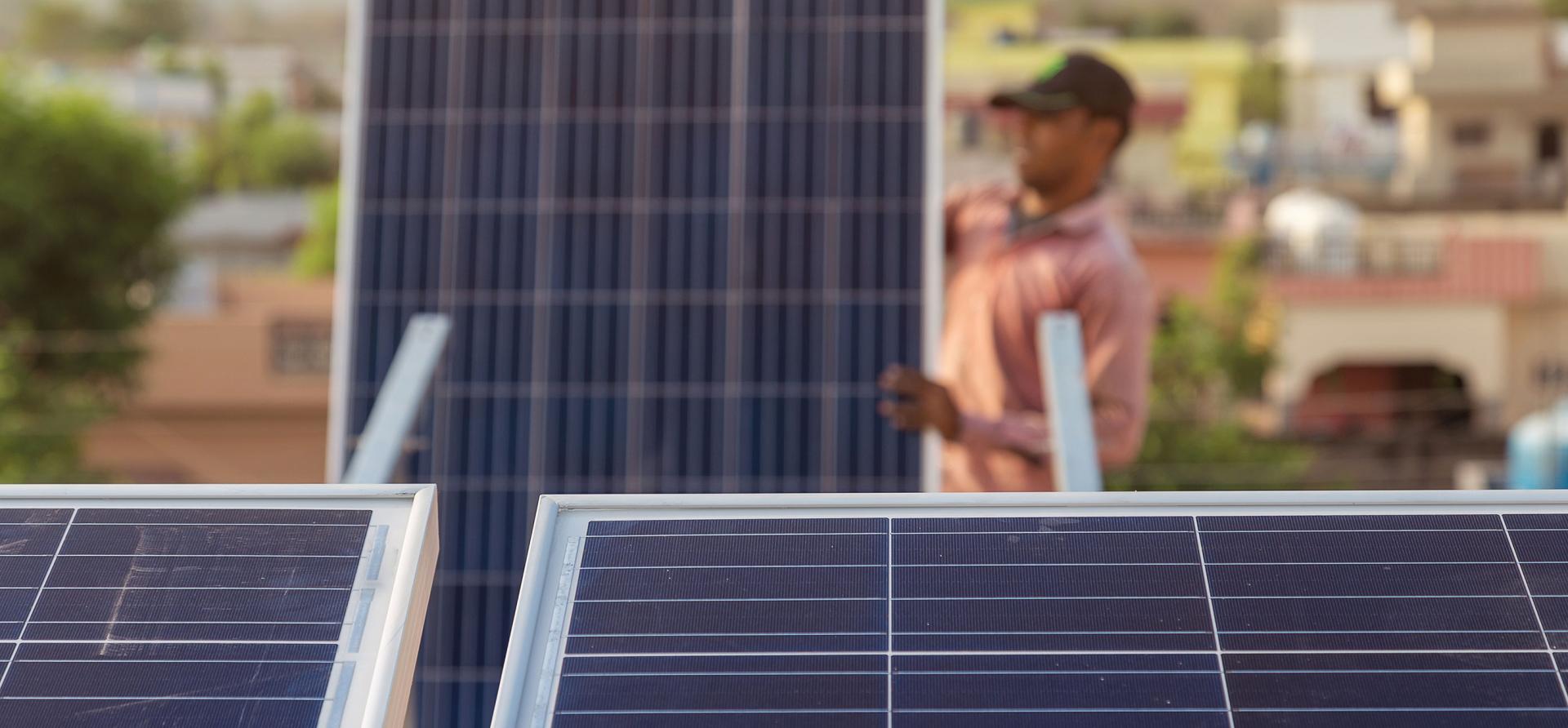Renewable energy is the only sustainable, long-term solution to meet India’s rising peak power demand

Key Findings
Soaring temperatures in April 2022 pushed India’s peak demand for electricity to a record high. Like last year, it appears the country will resort to generation from imported fossil fuels to meet peak demand.
This situation could be avoided with better planning and the rapid deployment of additional renewable energy capacity.
Authorities must plan according to changing electricity demand patterns which are shifting to the time of day and year when solar energy output is abundant.
With April arriving, India’s peak demand for electricity is likely to touch an astonishing 230 gigawatts (GW). Like last year, it appears inevitable that the country will resort to imported fossil fuels to ensure there is no supply shortfall.
Although generation from imported fossil fuels may help reduce power cuts, it will add to the fiscal burden. Better planning and tight implementation could have mitigated dependence on expensive imported fossil fuels. It would have also saved critical financial resources that would find better utilisation in clean energy investments.
Renewable energy installation has a gestation period of 12-18 months. Therefore, planning to add renewable capacity on a war footing at the start of power distress last year, when peak demand touched 216GW in April, would have saved scouting for imported fuels yet again.
While last year was a surprise as extreme heat and post-COVID-19 industrial recovery led to unprecedented electricity demand, authorities must plan additional renewable energy capacity considering the changing electricity load curve patterns.
For instance, peak demand is moving forward in the year, from September in 2019 to April in 2022, and earlier in the day, from 8-9 pm in 2019 to 2-3 pm in 2022. This change is favourable for meeting the incremental demand through cleaner domestic resources like solar energy and provides even more impetus for India to meet its 450GW renewable energy target by 2030.
Planning needs to improve
The government started planning from last November to meet this year’s demand by ensuring that all generation capacity is ready with maintenance and increasing coal production and dispatch. In addition, it asked generators to undertake timely import of coal for blending up to 6% of their requirement with domestic coal to be pro-rated for defaulters. It had also noted that GAIL (India) would supply 248 metric million British thermal units (MMBtu) of gas to NTPC to operate 5,000 megawatts (MW) of gas-powered capacity for a month from 15 April 2023.
Now, the government has floated fresh tenders to secure an additional 4,000MW of gas power from other power plants, with NTPC’s subsidiary NTPC Vidyut Vyapar Nigam Limited (NVVN) providing a minimum offtake guarantee. The government will fund any shortfall in cost through the power system development fund (PSDF).
Despite taking measures early on to meet the peak demand, there has still been a shortfall in planning which has necessitated dependence on imported feedstock.
The government has also floated a tender to secure 1,500MW of electricity from imported coal from 10 April 2023. This would push up the already high prices of electricity that have averaged to Rs 6.18/unit for the first two months of 2023, a 58% increase from last year.
Rethink allocation of domestic gas
There is a limited role for gas-based capacity to meet peak demand and provide ancillary services until storage options are commercially operational.
Last year, the peak capacity met was a record high of 211.86GW in June 2022, of which coal supplied 68%, renewables and hydro 26%, and gas only 2%. Notably, only 13% gas-based installed generation capacity of 24.8GW was utilised in June 2022, with incremental supply coming from imported liquefied natural gas (LNG).
Better allocation of domestic gas to power is critical during electricity shortages. Yet, the allocation has decreased since the domestic gas allocation policy change in August 2022. A higher allocation of domestic gas to the city gas distribution sector was mandated to reduce the blending of regasified LNG and make it affordable for end users. This adversely impacted domestic gas-based power generation due to reduced domestic fuel supply.
The 9,000MW of gas-based capacity being scouted might have to be based on expensive imported gas as there is at least a 50% gap in the allocation and requirement. To run 9,000MW of gas-based capacity at 85% plant load factor (PLF), there is a need for approximately 38.5 million metric standard cubic meters per day (mmscmd) of natural gas.
But, the domestic gas allocation to the power sector in the last six months has been 18.7mmscmd on average. The sector needs a higher domestic gas allocation for the coming months to effectively utilise the gas-based capacity and meet the shortfall in power supply.
Long-term solutions
The recent introduction of a high price day ahead market (HP-DAM) for expensive fuel, including imported natural gas, imported coal and battery storage, would allow sellers a ceiling price of Rs50 per unit, almost four times the spot power ceiling of Rs12 per unit. While this would probably ensure meeting peak power demand during the summer months, it will be at unprecedented electricity tariffs.
Installing more renewable energy capacity is the only sustainable, long-term solution, given that electricity demand patterns are shifting to the time of day and year when solar energy output is abundant. Moreover, renewable energy is deflationary and, unlike imported fossil fuels, doesn’t add to the fiscal burden.
This article was first published in ET Energyworld















